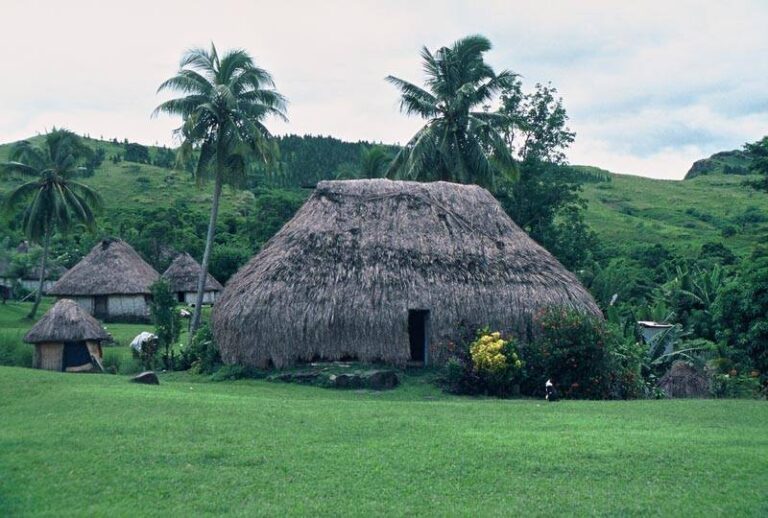Types of Houses in Fiji
Fijian housing ranges from traditional village homes to modern urban buildings, depending on the location (rural vs. urban), wealth, and cultural background.
1. Traditional Fijian Houses (Bure)
- Name: Bure
- Material: Thatched roofs, bamboo or timber walls, coconut fiber ropes.
- Features:
- Built without nails.
- Often raised slightly off the ground.
- Open-air design for ventilation.
- Used in: Villages and cultural resorts.
2. Concrete Block Houses
- Common in: Cities like Suva, Nadi, and Lautoka.
- Material: Cement blocks, metal roofing, glass windows.
- Features:
- Durable and cyclone-resistant.
- May have tiled floors, plumbing, and electricity.
3. Colonial and Plantation-Style Houses
- Found in: Older towns and estates.
- Design: Elevated wooden homes with large verandas and corrugated roofs.
- Features:
- Ventilated for tropical climate.
- Often painted in bright colors.
4. Informal Settlements (Squatter Homes)
- Material: Corrugated metal, plywood, recycled materials.
- Features:
- Found around cities due to rural-urban migration.
- Limited access to water, electricity, and sanitation.
5. Rural Wooden Houses
- Material: Local timber, metal roofing.
- Features:
- Simple structure.
- Often single-room dwellings.
- May lack modern amenities.
6. Modern Apartments and Villas
- Common in: Tourist zones and urban centers.
- Features:
- Air conditioning, plumbing, Wi-Fi.
- Gated compounds or beachfront views.
- Used by: Wealthier residents, expatriates, and tourists.



